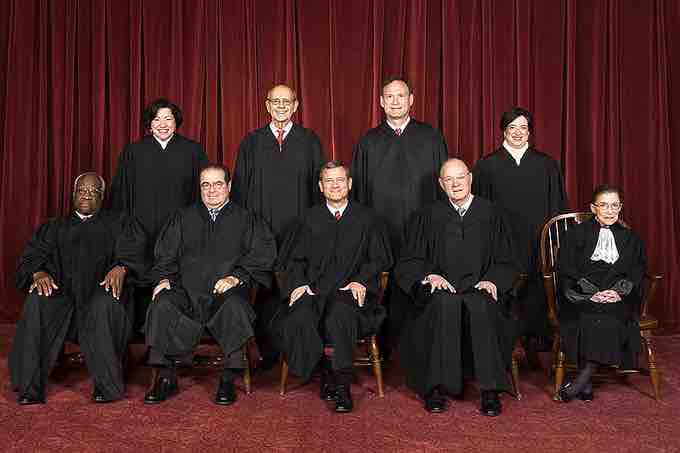Introduction
Justice is a concept of moral rightness based on ethics, rationality, law, natural law, religion, or equity. In a world where people are interconnected, but with disagreements, institutions are required to instantiate ideals of justice . These institutions may be justified by their approximate instantiation of justice, or they may be deeply unjust when compared with ideal standards. Another definition of justice is an independent investigation of truth. In a court room, lawyers, the judge, and the jury are supposed to be independently investigating the truth of an alleged crime.

Lady Justice
Lady Justice depicts justice as equipped with three symbols: a sword symbolizing the court's coercive power; a human scale weighing competing claims in each hand; and a blindfold indicating impartiality.
The Judiciary and Rule of Law
The judiciary is the system of courts that interprets and applies the law in the name of the state. Under the doctrine of the separation of powers, the judiciary generally does not make law or enforce law, but rather interprets law and applies it to the facts of each case. The judiciary also provides a mechanism for the resolution of disputes. This branch of the state is often tasked with ensuring equal justice under law. It usually consists of a court of final appeal, together with lower courts.
The rule of law is a legal doctrine whereby governmental decisions are made by applying known legal principles. Rule of law implies that every citizen is subject to the law . It stands in contrast to the idea that the ruler is above the law, for example by divine right, which the European monarchy routinely invoked to justify its rule. All government officers of the United States, including the President, the Justices of the Supreme Court, and all members of Congress, pledge first and foremost to uphold the Constitution. These oaths affirm that the rule of law is superior to the rule of any human leader

"The Mosaic Law" by Frederick Dielman (1896)
Mosaic representing both the judicial and legislative aspects of law. The woman on the throne holds a sword to chastise the guilty and a palm branch to reward the meritorious. Glory surrounds her head, and the aegis of Minerva signifies the armor of righteousness and wisdom.
United States Court System
In the United States court system, the Supreme Court is the final authority on the interpretation of the federal Constitution and all statutes and regulations created pursuant to it, as well as the constitutionality of the various state laws; in the U.S. federal court system, federal cases are tried in trial courts, known as the U.S. district courts, followed by appellate courts and then the Supreme Court. State courts, which try 98% of litigation, may have different names and organization; trial courts may be called "courts of common plea," and appellate courts may be "superior courts" or "commonwealth courts. " The judicial system, whether state or federal, begins with a court of first instance, is appealed to an appellate court, and then ends at the court of last resort.
The Supreme Court of the United States is the highest court in the United States . It has ultimate appellate jurisdiction over all federal courts and over state court cases involving issues of federal law, and original jurisdiction over a small range of cases. The Court, which meets in the United States Supreme Court Building in Washington, D.C., consists of a chief justice and eight associate justices who are nominated by the President and confirmed by the United States Senate. Once appointed, justices have life tenure unless they resign, retire, or are removed after impeachment.

The United States Supreme Court (2010)
The United States Supreme Court, the highest court in the United States, in 2010. Top row (left to right): Associate Justice Sonia Sotomayor, Associate Justice Stephen G. Breyer, Associate Justice Samuel A. Alito, and Associate Justice Elena Kagan. Bottom row (left to right): Associate Justice Clarence Thomas, Associate Justice Antonin Scalia, Chief Justice John G. Roberts, Associate Justice Anthony Kennedy, and Associate Justice Ruth Bader Ginsburg.